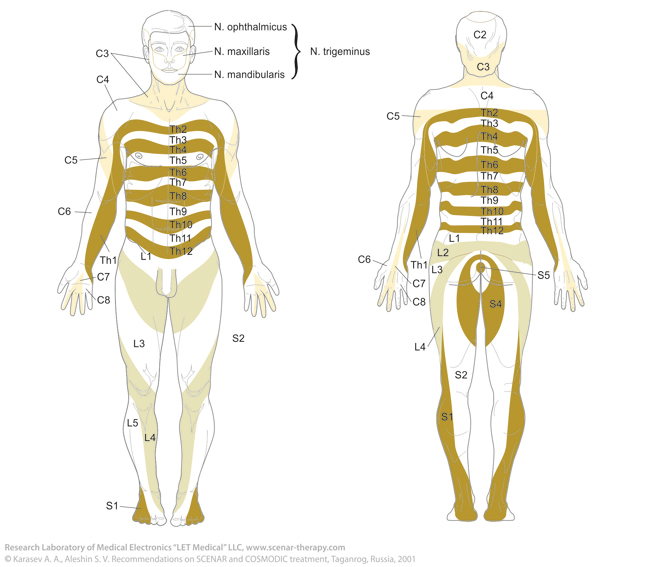| Diagnosis |
Areas to act upon |
Characteristics of the procedures |
Course of treatment |
| Radiculitis, plexitis, neuritis, neuralgia |
Area of maximum complaint → the corresponding segment → symmetric area → basic areas |
|
10–14 days
|
| Zoster and herpes of other localization |
Area of maximum complaint → the corresponding segment → symmetric area → basic areas |
|
5–10 days
|
| Neuroinfections |
Area of maximum complaint → the head → three tracks → other basic areas |
|
q. s.
until the disorder is eliminated
|
| Migraine |
Six points → collar area → basic areas |
Act upon the symmetric areas as well |
q. s.
until the migraine attack is eliminated
|
| Encephalopathy |
The head → collar area → basic areas |
For more effective treatment it is recommended to shave the head hair |
15–21 days
|
| Acute insult |
First of all the head areas → hands and forearms |
The sooner the treatment has been started the sooner the recovery comes. The first action should last for no less than 1 hour. The next actions can last for 20–40 minutes.
|
Several hours, days, depending on the condition of the patient
|
| Insult after-effects
|
The head areas → six points → extremities → basic areas |
The treatment should be concentrated on restoration of the moving ability of the patient and his moving stereotype. The procedures should be conducted no more often than every other day. |
15–25 sessions,
2–3 courses
|
| Paresis, chronic paralysis
|
Extremities → the head → basic areas |
The treatment should be conducted no more often than every other day. |
15–25 sessions,
2–3 courses
|
| Infantile cerebral paralysis
|
The head → extremities → basic areas |
The treatment should be conducted no more often than every other day. |
10–14 days,
2–3 courses
|
| Epilepsy |
The head → collar area → basic areas |
Together with treatment of the head, provide sufficient action upon the muscles. |
10–14 sessions,
1–2 courses
|

